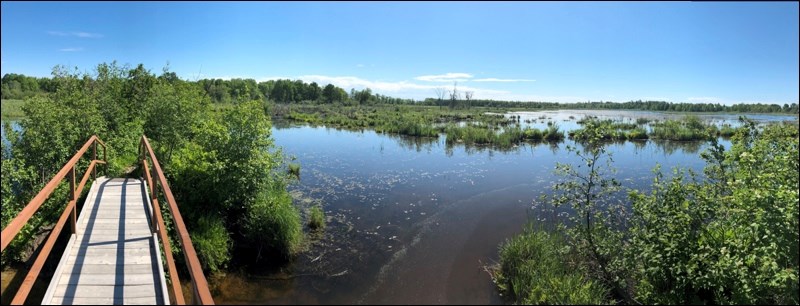Earlier this winter I watched as a record amount of January rain filled the swamp at the back of our property. With the ground still locked in a hard freeze, there weren’t a lot of places to hold this deluge. This swamp was doing what swamps and other wetlands were quietly doing: holding billions of litres of water that would otherwise swell rivers and streams and flood the places where we live.
Wetlands, like my swamp, play an unsung role in water management. They are our water towers, flood-control reservoirs and filtration plants. They are the green sponges that hold water when we have too much and slowly release it into our streams and aquifers when we need it the most.
But wetlands are much more than an ally in water management; they are critical for stopping our current crisis of wildlife extinction. Marshes, swamps, fens, floodplains and bogs provide habitat for hundreds of Canada’s species at risk. Some species, like swamp rose mallow and western painted turtle, cannot be separated from their wetland habitat. Lose the wetland and we lose the species.
Future generations will look back at the 20th century as a period of the most extraordinary change to the ecology of our planet. Levels of carbon dioxide in the atmosphere reached record levels, most of our large intact forested landscapes disappeared, up to one million species became threatened with extinction and we lost well . And while burning forests in Brazil and Australia rightfully capture the headlines, our planet’s wetlands have been lost at a rate three times faster than forests.
In Canada’s North, we still have some of the largest and most important wetlands left on the planet, a wetland wilderness that provides habitat for species like caribou and holds more carbon than any other ecosystem. Keeping this carbon under lock and key is one of the greatest gifts Canada can give the world as we start to work toward re-stabilizing our climate.
In Canada’s south there are places where we have lost over 80 per cent of the original wetlands, along with the flood protection, habitat and carbon storage they once provided. There are still important wetlands — from salt marshes in the Maritimes to Great Lakes coastal wetlands to prairie potholes — but to save these, we need to act fast.
As with many planetary challenges facing us today, we generally know what to do, but poke at the problem when a collective push is needed. We need to ensure that in Canada’s new pledge to protect 30 per cent of our lands and inland waters by 2030 that important wetlands are conserved.
In many places, we have an opportunity to even reverse the loss of wetlands. On Pelee Island in Ontario and the Campbell River estuary in British Columbia we are slowly restoring key areas. We can build on this success by supporting the efforts of organizations like the Nature Conservancy of Canada, Ducks Unlimited Canada and leveraging funding from the Natural Heritage Conservation Program and North American Wetland Conservation Act .
If we get wetland conservation right, we move toward solving many other issues. They protect biodiversity, help communities adapt to a changing climate and they are an essential part of our Canadian landscape.
Dan Kraus is senior conservation biologist with the Nature Conservancy of Canada.




